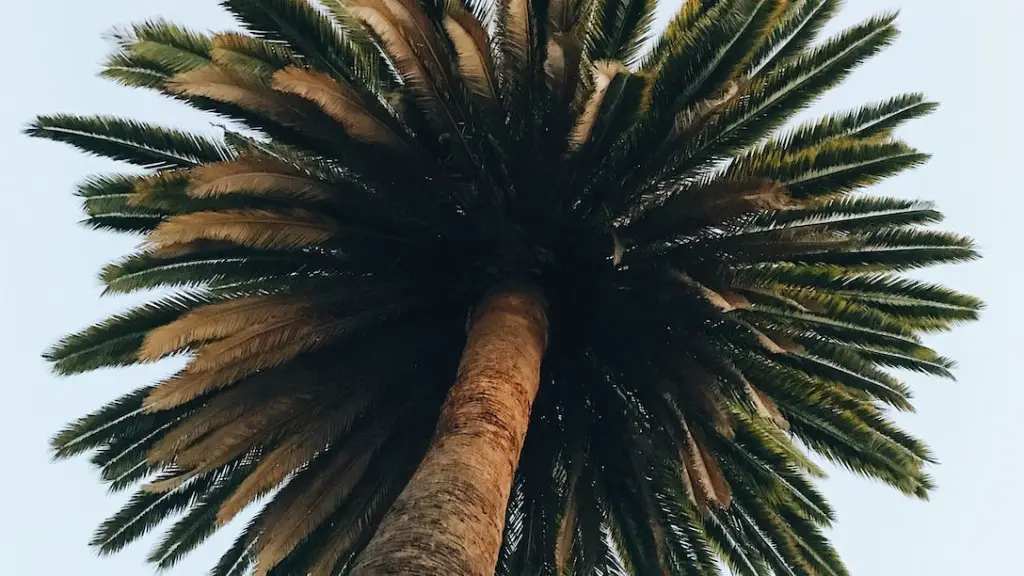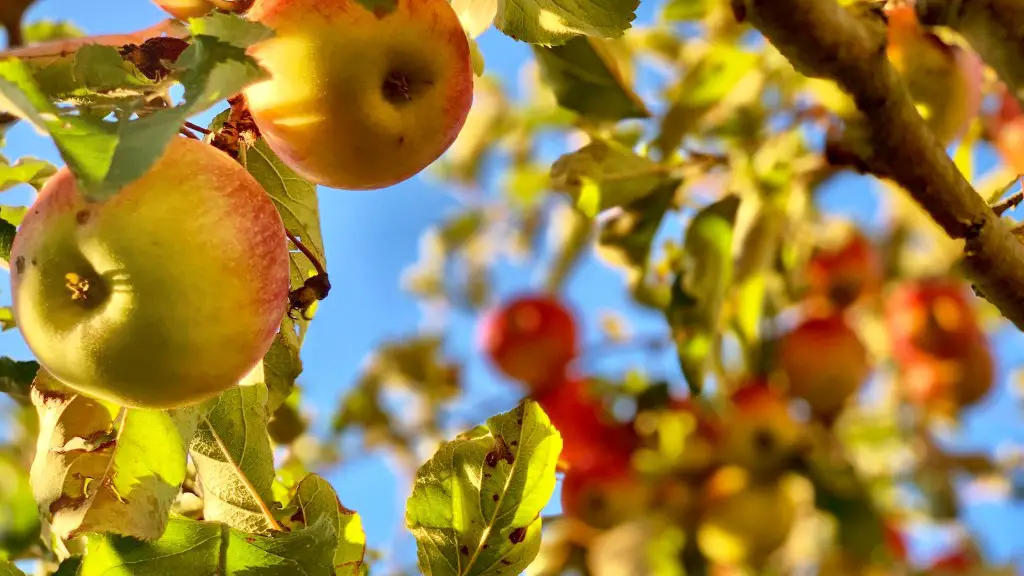Trimming a cherry tree is a delicate process and requires careful consideration, preparation and patience. The health of the tree depends on it, as trimming too often, or in the wrong way, can lead to infection, disease and slow growth.
Cherry trees are classified as either dwarf, semi-dwarf, or standard-sized, and all require different frequencies of trimming depending on their size, age and location. The best time to trim a cherry tree depends on the type of tree and its current season.
For dwarf and semi-dwarf cherry trees, pruning should be done in late winter, before bud break in spring, or after the tree has finished blooming. This will ensure that the cherry tree gets the best balance of growth and blooming. Standard-sized cherry trees should also be trimmed in late winter, before or after they have bloomed.
When trimming a cherry tree, it is important to keep a few key factors in mind. The first is to remove any dead or diseased branches. If not removed, these branches can spread disease and therefore weaken the tree further. Once these dead or diseased branches are removed, it is important to prune the tree selectively and with care. The basic rule is to never take off more than ¼ of the tree’s branches in one season, as this could place unnecessary stress on the tree.
In addition to removing dead or diseased branches and pruning selectively, it is important to avoid overcrowding the tree. Cherry trees should be regularly pruned throughout their life to maintain their shape, remove dead or diseased branches, and allow for new growth. Overcrowding is a major cause of slow growth in cherry trees and can lead to the tree becoming top-heavy and unstable.
Soft Pruning Techniques
Soft pruning techniques are also beneficial to cherry trees as they help promote growth while limiting damage. Soft pruning techniques include removal of suckers, water-sprouts, and crossing branches. Suckers are branches that grow directly from the tree’s trunk and should be removed to encourage the growth of other branches. Water-sprouts are shoots that grow rapidly and should be removed to prevent them from overshadowing other branches. Lastly, crossing branches should be removed as they can damage branches further down and inhibit the cherry tree’s growth.
When pruning a cherry tree, it is important to use the right tools. Both sharp, clean pruners and saws should be used for trimming. Pruners are used for smaller branches and saws for larger ones, as saws are better able to handle thicker limbs. It is also important to have ladders or other devices handy to reach high branches and ensure that cuts are made in a way that prevents disease from spreading further.
Seasons for Pruning
Late winter is generally the best season for pruning cherry trees, as this helps encourage new growth and promotes healthy blooms come springtime. Pruning during late summer is also possible, however it should be done sparingly and with care so as not to weaken the tree or prevent new growth.
Gardeners’ Maintenance
Cherry tree maintenance is critical for healthy growth and maximum fruit production. It is best to monitor a cherry tree to ensure it receives continued care and maintenance. Gardeners should check the tree regularly for any signs of disease and any changes in foliage or branch structure. Pruning should be done on a regular basis in order to keep the tree healthy and strong.
Fertilizing & Mulching
Fertilizing and mulching are also essential components of cherry tree maintenance. Fertilizing helps to maintain healthy growth and promote strong blooms, while mulching helps to retain moisture and protect the tree from extreme weather conditions like hail, extremely hot or cold temperatures, and excessive wind.
Maintaining the Health of the Tree
Overall, cherry tree trimming is a delicate process and requires careful consideration and practice. In order to maintain the health and longevity of a cherry tree, it is important to prune at the correct times, use the right tools and techniques, and give the tree the care and attention it deserves. With these practices in place, a cherry tree can live a long and happy life, providing many years of abundance and beauty.
Understanding When to Prune
When pruning cherry trees, understanding the different types of trees and when is best to prune them is critical for promoting healthy growth. This knowledge is key for gardeners and hobbyists alike in order to properly care for their cherry trees and ensure optimum growth.
Disease Prevention
Finally, pruning is also important for disease prevention in cherry trees. Pruning regularly and removing any dead or diseased branches helps to keep the tree healthy and reduce the risk of infection. Whether trimming standard, semi-dwarf, or dwarf cherry trees, it is important to prune carefully and keep in mind the overall health of the tree.

